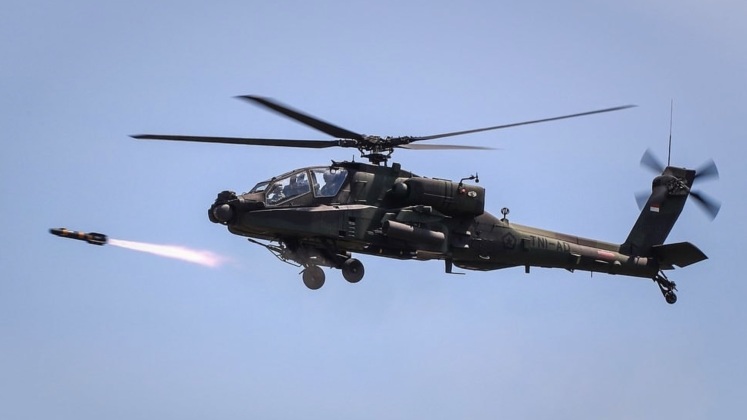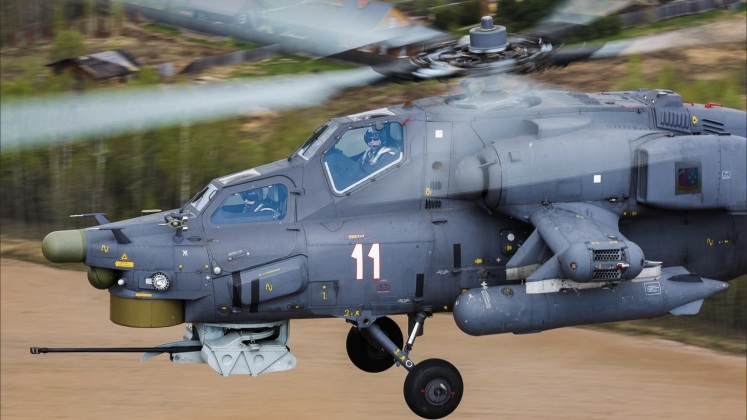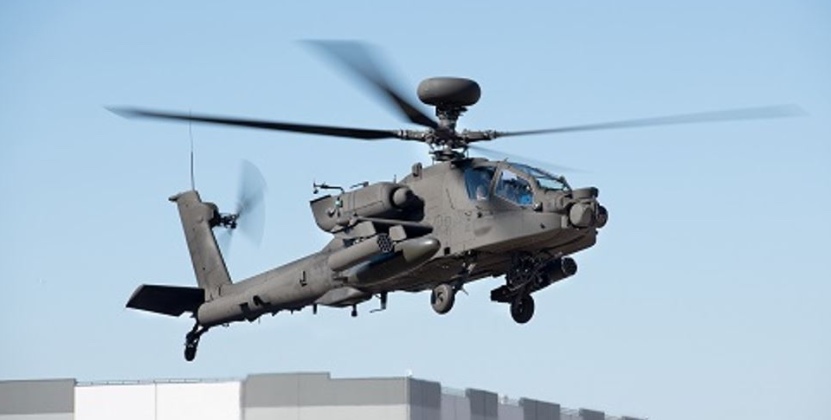News
Four U.S. Army Apache Attack Helicopters Crash in 43 Days: Fleet Pressed to Face Widespread Security Commitments
The United States Army’s most capable class of attack helicopter, the AH-64 Apache, has taken two losses to accidents within just three days, and four losses in under 44 days, causing major concerns for personnel safety and leading to repeated grounding of parts of the fleet. The first of the two recent incidents took place during a routine drill on March 24 at Joint Base Lewis-McChord, Washington State, injuring two pilots, while the second took place on March 26 when an Apache operating at Fort Carson, Colorado, went down during training and also injured its pilots. The prior incidents occurred on February 12 and February 23, with the second killing both its pilots. Approaching 40 years in service, the Apache is by far the oldest class of heavy attack helicopter still in production, and belatedly provided the U.S. and NATO more broadly with a general performance equivalent to the Soviet Mi-24, which had for the preceding 15 years been effectively in a league of its own in terms of capabilities with no foreign rivals.

The cause of recent incidents involving the Apache fleet remains uncertain, although in 2023 the Army disclosed a significant increase in failures of electrical power generators on the aircraft which could cause “potentially hazardous” smoke buildups in the their cockpits. There have been no indications, however, that any of the recent crashes was caused by generator issues. Questions have also been raised regarding flight conditions, the quality of maintenance provided, and personnel training levels, although with the aircraft manufactured by Boeing, which has seen many of its aircraft face significant issues in recent years, a number of sources have been quick to speculate that the manufacturer is at fault. The U.S. Military currently fields over 700 Apache helicopters, with the class in production to meet the stated Army Acquisition Objective of 812 helicopters, as well as orders from foreign clients most significantly a Polish order for 96 of the aircraft placed in September 2023. The U.S. Army’s reliance on the Apache has increased significantly due to the cancellation in February of the Higher Attack Reconnaissance Aircraft program intended to produce an aircraft that could replace close to half the Apache fleet. As a result meaning many of the Apaches currently in service will be expected to remain operational for considerably longer. The growing vulnerability of even well armoured helicopters in a range of roles, which has been demonstrated in the Ukrainian theatre, was a key reason for the cancelling the new program.

In the fleets of potential adversaries the Apache faces significantly newer helicopter designs, including in Russian service the successors to the Mi-24 the far more capable Mi-28 and Ka-52. These are both a full generation ahead of their predecessor, and of the Apache itself, in terms of design sophistication. The Chinese People’s Liberation Army’s first class of heavy attack helicopter was first seen on March 21, and while clear images of the aircraft have yet to emerge the program has the potential to rob the U.S. and its allies of one of their most significant few remaining capability advantages. The Russia Mi-28 is currently the primary attack helicopter of the Algerian Army, which there have been multiple indications is a potential adversary of the U.S. and remains a leading power in Africa outside Washington’s sphere of influence. The Iranian Revolutionary Guard Corps, which Washington has designated a terrorist organisation, is also speculated to be the recipient of Mi-28s ordered by Iran in 2023.

Losses among the Apache fleet, and concerns regarding the operational viability of remaining aircraft, are particularly concerning as the U.S. grapples with growing security challenges across multiple theatres. These include the Russian-Ukrainian War where American and allied NATO personnel and contractors have played extensive and growing roles on the ground, and in the Middle East, where ground and naval engagements with local militia forces have occurred frequently since October 2023. Tensions on the Korean Peninsula and in the South China Sea have placed further strain on American capabilities, as the balance of power in both theatres has become increasingly unfavourable for U.S. interests due to rapid modernisation of Chinese and North Korean forces. The Apache faced significant maintenance issues during its combat deployments by the U.S. during Operation Desert Storm and in NATO’s 1999 assault on Yugoslavia, and has seen 16 of its number in U.S. Army shot down in combat. No more capable successor is expected to be developed within the next decade anywhere in the Western world, and before the revelation of a new Chinese platform on March 21 such heavy attack helicopters had otherwise only been developed and brought into service by Russia.












